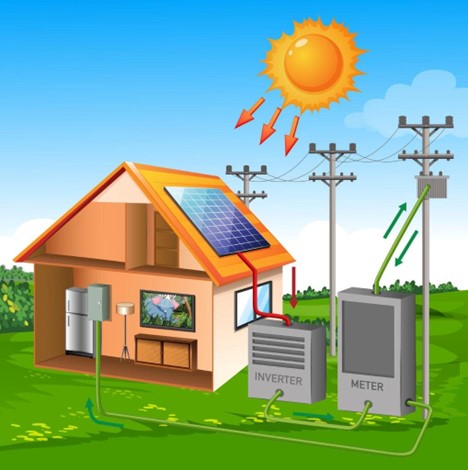Welcome to our comprehensive guide on solar photovoltaic (PV) systems! Whether you’re new to the concept or a seasoned pro, this blog post will provide you with all the information you need to know about solar PV systems. From understanding what they are, how they work, to the benefits they offer, we’ve got you covered.
What is a Solar PV System?
A solar PV system is a renewable energy technology that converts sunlight into electricity. It consists of several components, including solar panels, inverters, mounting systems, and electrical wiring. The solar panels, made up of photovoltaic cells, are responsible for capturing sunlight and producing direct current (DC) electricity. The inverters then convert this DC electricity into alternating current (AC) electricity, which can be used to power homes, businesses, or fed back into the grid.
How Do Solar PV Systems Work?
Solar PV systems work by utilizing the principles of physics and the properties of semiconductors. When sunlight strikes the solar panels, the semiconductors within the photovoltaic cells absorb the energy and release electrons, creating an electrical current. This current is then harnessed and converted into usable electricity by the inverters.

Benefits of Solar PV Systems
There are numerous benefits to installing a solar PV system:
- Reduced Electricity Bills: By generating your own electricity, you can significantly reduce your reliance on the grid and lower your electricity bills.
- Environmental Sustainability: Solar PV systems produce clean, renewable energy, reducing greenhouse gas emissions and combating climate change.
- Energy Independence: By generating your own electricity, you become less dependent on fossil fuels and are more resilient to power outages or price fluctuations.
- Financial Incentives: Uk government and utilities offer incentives, such as tax credits or feed-in tariffs, to encourage the adoption of solar PV systems, making them more financially attractive.
- Long-Term Investment: Solar PV systems have a lifespan of 25-30 years and require minimal maintenance, providing a long-term, reliable source of electricity.
Considerations for Installing Solar PV Systems
Before installing a solar PV system, here are a few factors to consider:
- Available Sunlight: Assess the amount of sunlight your location receives throughout the year. Ideally, solar panels should be installed in areas that receive direct sunlight for a significant portion of the day.
- Roof Suitability: Evaluate the condition and orientation of your roof to determine if it can accommodate solar panels. South-facing roofs with minimal shading are typically the most ideal.
- Energy Usage: Analyze your energy consumption patterns to determine the size of the solar PV system required to meet your needs. Consult with a professional installer to accurately assess your energy usage.
- Financing Options: Explore various financing options, such as purchasing or leasing, to find the most suitable arrangement for your financial situation.
Maintenance and Monitoring of Solar PV Systems
While solar PV systems require minimal maintenance, regular monitoring and upkeep are essential to ensure optimal performance and longevity.
- Cleaning: Periodically clean the solar panels to remove dirt, debris, and any other substances that may obstruct sunlight absorption.
- Inspections: Schedule regular inspections to check for any signs of damage, such as cracked panels or loose wiring, which could affect the system’s performance.
- Performance Monitoring: Utilize monitoring software or systems to track the energy production of your solar PV system. This allows you to identify any issues or inefficiencies promptly.
Taking the Next Steps
If you’re considering installing a solar PV system, here are a few recommended next steps:
- Get Quotes: Reach out to EcoLive energy solutions to obtain quotes and compare pricing, system designs, warranties, and reviews.
- Financing Research: Research available financing options, including purchase, lease, or power purchase agreements, to determine which option best suits your financial needs.
- Permitting and Incentives: Check with your local authorities regarding necessary permits or approvals for solar PV installation. Additionally, research and take advantage of any available financial incentives.
- Professional Installation: Once you’ve decided on a solar PV system and financing option, engage a our consultancy department to ensure proper installation and adherence to safety standards.
In conclusion, solar PV systems offer a sustainable, cost-effective, and long-term solution to meet our energy needs. By harnessing the power of sunlight, we can reduce our carbon footprint, lower electricity bills, and contribute to a cleaner and greener future.

